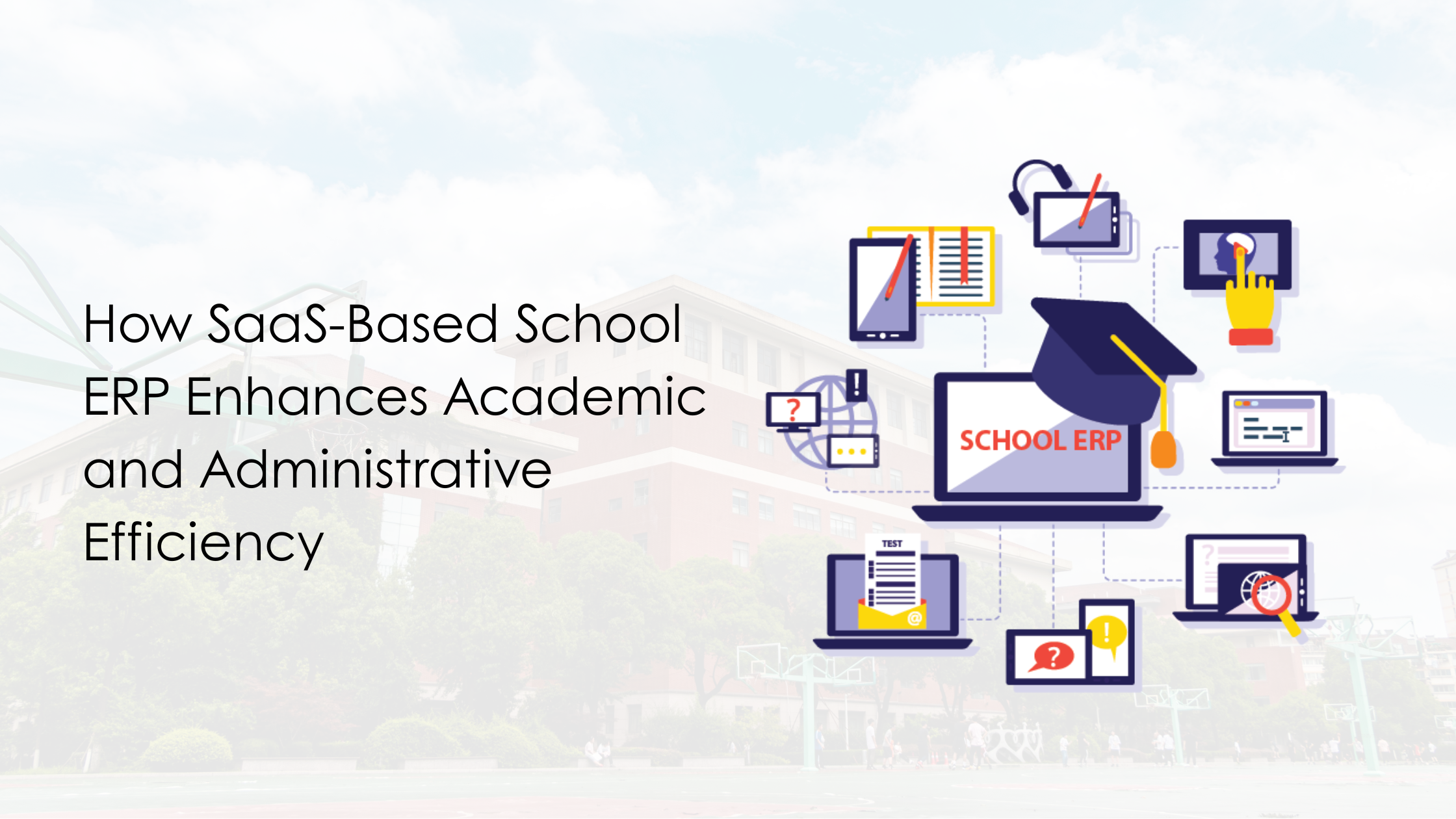In today’s rapidly digitizing education landscape, schools are expected to deliver more than just academic excellence. Efficient administration, seamless parent-teacher communication, real-time performance tracking, and resource optimization have become integral to school success. A powerful way to achieve all this? Implementing a SaaS-Based School ERP (Enterprise Resource Planning) system.
Having spent over two decades consulting with schools and educational institutions, I’ve witnessed how legacy systems and manual processes slow down progress. In contrast, cloud-native, SaaS-based ERP solutions offer a transformative impact—streamlining operations and enriching the academic experience.
Let’s explore how.
What is a SaaS-Based School ERP?
A SaaS-Based School ERP is a cloud-hosted software solution that enables educational institutions to manage every academic and administrative process via a centralized digital platform. Unlike traditional software installations, SaaS ERP systems require no local server or hardware investment. Schools access these systems through the internet, on any device, from any location.
Key Modules Typically Include:
- Admissions Management
- Student Information System (SIS)
- Attendance and Leave Management
- Fee and Financial Management
- Examination and Result Processing
- Library, Hostel, and Transport Management
- HR and Payroll for Staff
- Parent and Student Communication Portals
Why Schools Are Switching to SaaS-Based ERP Systems
According to a recent study by Technavio, the education ERP market is projected to grow by USD 5.96 billion from 2022 to 2027, with SaaS-based models accounting for a significant share of this growth. (Source)
This growth isn’t surprising when you consider the tangible benefits:
1. Improved Operational Efficiency
Manual administrative tasks like attendance recording, fee collection, or timetable scheduling often result in errors and inefficiencies. SaaS ERP automates these functions, freeing up valuable staff time and reducing errors by up to 90%.
2. Scalability and Accessibility
SaaS-based systems are highly scalable. Whether you’re a small K-12 school or a network of institutions, ERP can be customized to fit your needs. Plus, real-time access from mobile or desktop ensures data is always at your fingertips.
3. Cost-Effective Deployment
There’s no need for expensive on-premise hardware. Most SaaS ERP models operate on a subscription basis, reducing upfront costs. According to a report by Deloitte, cloud-based software cuts IT costs by 30-40% on average.
4. Data-Driven Decision Making
ERP dashboards provide insights on student performance, fee defaulters, staff efficiency, and more. With all data centralized, school leaders make informed decisions backed by real-time analytics.
5. Enhanced Parent and Student Engagement
With features like mobile apps, SMS notifications, and performance tracking, SaaS ERP fosters stronger communication between school and home. Parents stay informed and involved.
6. Better Compliance and Security
With cloud-native security protocols, data encryption, and access controls, SaaS ERPs offer better protection than traditional on-site servers. Regular updates ensure compliance with local and national regulations.
Academic Efficiency Through ERP
• Lesson Planning and Curriculum Management
Teachers can create lesson plans aligned with academic calendars and track syllabus completion in real time. This ensures standardization and transparency across departments.
• Performance Monitoring
Automated grading, real-time dashboards, and analytics make performance evaluations easier and more accurate. Teachers and parents can spot areas for improvement quickly.
• Exam Management
ERP systems simplify exam scheduling, grade entry, moderation, and results publishing—streamlining what was once a chaotic process.
• eLearning and LMS Integration
Many SaaS-based ERPs integrate with Learning Management Systems, enabling schools to support hybrid learning environments.
Administrative Efficiency Gains
• Digital Admissions
Simplify the application, screening, and enrollment process with online forms, automated communication, and integrated document management.
• Financial Management
Manage fee structures, payments, refunds, and reports digitally. ERP systems help reduce fee leakage and improve collection rates by up to 25%.
• Inventory and Resource Management
From textbooks to lab equipment, ERPs track inventory in real time, minimizing wastage and budgeting more effectively.
• Transport and Hostel Modules
Track buses with GPS, manage boarding logistics, assign rooms—all within the ERP.
• HR and Payroll
Handle recruitment, staff profiles, attendance, leaves, appraisals, and payroll from a single dashboard.
Real-World Success Stories
Case Study 1: Delhi-based Private School
Implemented a SaaS ERP system in 2022.
- Administrative costs dropped by 28% in the first year
- Parent satisfaction scores increased by 35%
- Time spent on exam result compilation reduced by 60%
Case Study 2: Group of 10 Schools in Maharashtra
Adopted ERP to standardize operations across campuses.
- Achieved uniform academic delivery
- Reduced HR processing time by 45%
- Improved fee collection transparency
Final Thoughts
Investing in a SaaS-Based School ERP is no longer just a tech upgrade—it’s a strategic move toward operational excellence and enhanced learning outcomes. From the classroom to the principal’s office, every process becomes more efficient, transparent, and data-driven.
Schools that embrace ERP today are not just keeping up with the digital age; they’re laying the foundation for a smarter, more connected, and more impactful future in education.
If you’re considering digital transformation in your school, there’s no better time to act.
Frequently Asked Questions
1. What distinguishes a SaaS-Based School ERP from traditional ERP systems?
A SaaS-Based School ERP is cloud-based, allowing access from anywhere without hardware dependencies. Traditional ERP requires on-premise setup, higher maintenance, and lacks real-time accessibility.
2. Is a SaaS-Based ERP secure for sensitive student data?
Absolutely. Most SaaS ERPs use encryption, secure data centers, and role-based access controls. Regular security audits ensure student and staff data remains protected.
3. How long does it typically take to implement a school ERP system?
Implementation can take 4–8 weeks depending on school size, number of modules, and user training. SaaS systems are quicker to deploy than on-premise setups.
4. Can parents and students access ERP systems on mobile?
Yes, modern ERPs come with mobile apps or responsive web dashboards, enabling parents to view attendance, fees, grades, and updates in real time.
5. How does ERP impact staff productivity?
It reduces repetitive tasks like attendance, grading, and communication—freeing up time for teachers and admins to focus on core responsibilities.

